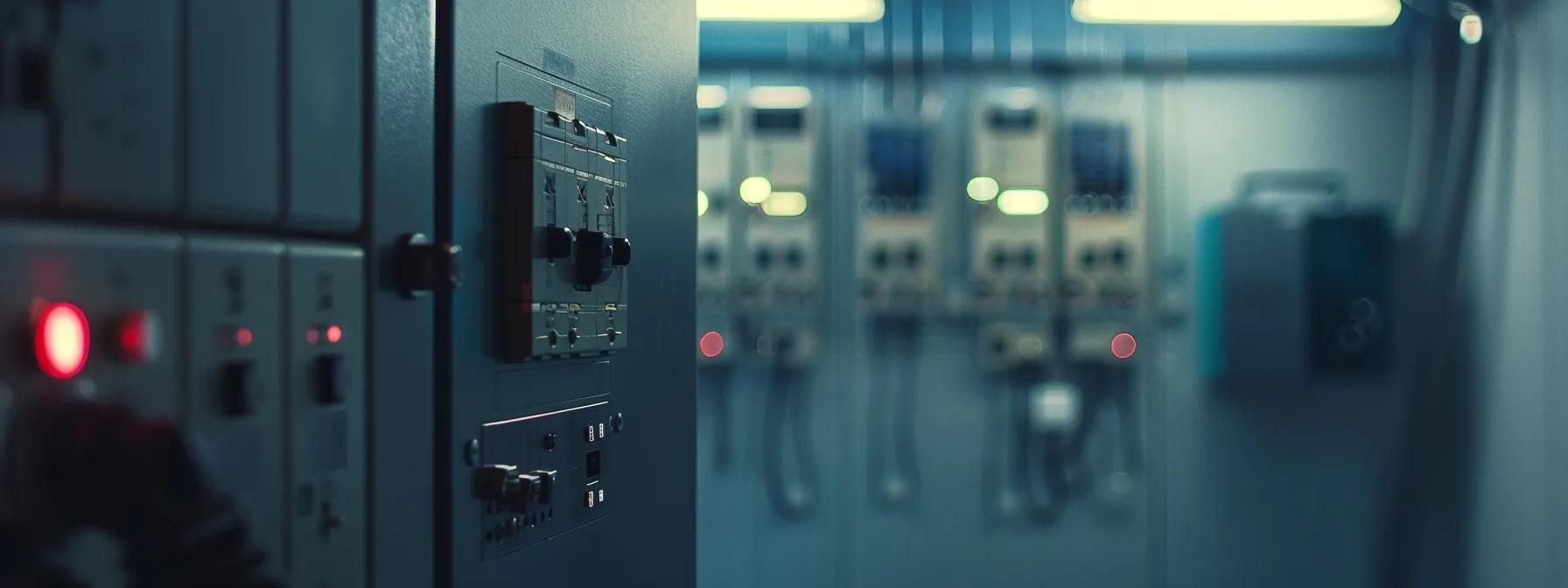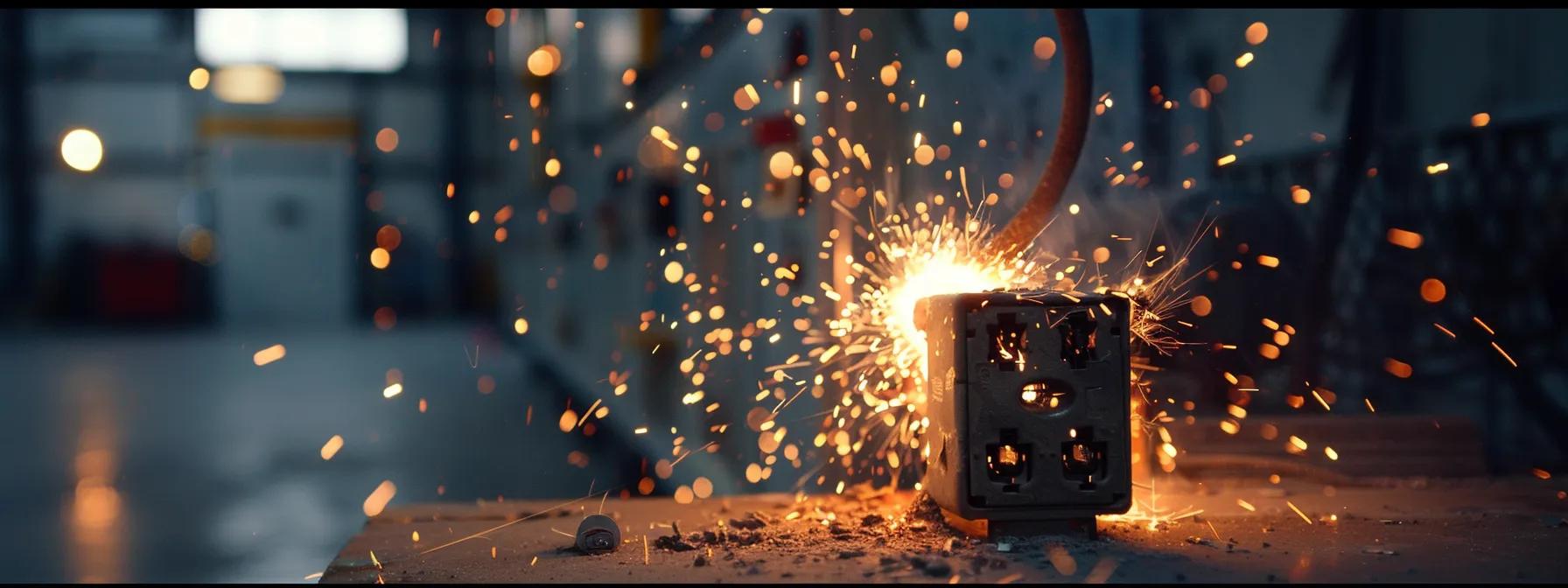Warning Signals Your Home May Need an Electrical Inspection
Electrical problems can pose serious risks to home safety and property. Homeowners must be attentive to warning signals that may indicate underlying issues in the electrical system. This article highlights key signs—from flickering lights to sparks—and explains what these symptoms mean, how frequently to monitor them, and when to consult a professional to ensure the system remains safe and code-compliant.
Recognize Flickering Lights Indicating Electrical Issues in Your Home
Flickering lights are a common indication of electrical issues. A change in brightness that occurs briefly or persists may signal problems in wiring or circuit integrity. Observing whether the flickering occurs throughout the home or in isolated areas can help determine if the issue is localized or affects the entire system.
Observe How Often Lights Flicker Throughout the House
The frequency of flickering—whether as brief flashes or repeated outages—may point to loose wiring or voltage instability. Consistent flickering in multiple rooms suggests broader electrical system issues that need attention.
Determine if Flickering Occurs With Specific Appliances
If flickering occurs only when certain appliances activate, it may indicate that those devices are drawing excessive current or causing voltage drops. Noting which appliances trigger the flicker can guide an electrician in diagnosing the problem.
Check if the Flickering Worsens During Peak Usage Times
Flickering that intensifies during heavy usage, such as in the evening, suggests that the electrical system may be struggling to meet increased demand or is experiencing circuit overload.
Identify if Only Certain Light Fixtures Are Affected
When only a single fixture or a specific group of lights flickers, the issue might be with that particular fixture—possibly due to aging connections or worn components—rather than the overall system.
Consult a Professional for Persistent Flickering Problems
If flickering continues or spreads, it is crucial to consult a licensed electrician. A professional can inspect for loose wiring, faulty fixtures, or deeper system faults that may lead to fire hazards or operational failures.
Notice Frequent Circuit Breaker Tripping and Its Implications

Circuit breakers trip to prevent damage from overcurrent and faults. Frequent trips may signal that the electrical load is too high or that a circuit has a fault requiring immediate evaluation.
Count the Number of Times Breakers Trip in a Month
Documenting the frequency of breaker trips can help gauge the severity of the issue. A pattern of trips may indicate that surges or anomalies are stressing the system.
Analyze Which Circuits Are Overloading Regularly
If certain circuits consistently overload, it may suggest outdated wiring or specific appliances drawing excessive current. This information is valuable for an electrician to pinpoint problem areas.
Evaluate the Age and Condition of Your Electrical Panel
Older panels may not handle modern electrical loads efficiently. Signs of wear or outdated technology in the panel can lead to frequent tripping, which might necessitate an upgrade or replacement.
Discuss Potential Upgrades or Repairs With an Electrician
Consistent breaker trips warrant professional guidance on possible panel upgrades or additional circuits to handle increased demands safely.
Understand the Risks of Ignoring Frequent Tripping
Ignoring regular tripping can escalate into severe hazards, including fires or appliance damage. Immediate investigation helps prevent costly and dangerous outcomes.
Identify Burnt or Discolored Outlet and Switch Plates
Burnt or discolored outlets and switch plates are clear warning signals. Such signs suggest excess heat or electrical arcing that can compromise wiring integrity and pose fire risks.
Inspect Outlets for Any Signs of Scorching or Discoloration
A visual inspection may reveal charring, melting, or discoloration, indicating that an outlet is overheating and may require replacement.
Test Outlets That Feel Warm to the Touch
An outlet that feels unusually warm is a sign of uneven electrical distribution. Reducing use and scheduling an inspection can prevent overloading and potential hazards.
Notice Any Unusual Odors Emitting From Outlets
A distinct acrid smell from outlets usually means burning electrical components. This odor should prompt immediate professional evaluation.
Ensure Devices Plugged Into Affected Outlets Are Unplugged
To minimize risk, unplug devices from outlets exhibiting these signs until an electrician can assess and repair the issue.
Contact an Electrician for Immediate Inspections on Damaged Outlets
Given the potential for fire and injury, prompt consultation with an electrician is essential when outlets or switch plates show signs of burn or discoloration.
Watch for Buzzing or Humming Sounds From Electrical Components

Buzzing or humming from electrical components indicates abnormal activity. These sounds may result from loose connections, failing parts, or circuit overload, and warrant further investigation.
Listen Closely for Unusual Noises Around Wiring or Outlets
Pay attention to any persistent humming or buzzing near circuit panels or outlets. Such noises are often early indicators of malfunctioning components.
Isolate the Source of Buzzing Sounds in Your Home
Determining the exact origin of these sounds—whether an outlet, fixture, or wiring section—assists professionals in pinpointing the issue for targeted repairs.
Document Instances of Electrical Noise and Their Locations
Keeping a record of when and where these sounds occur can be helpful for the electrician to correlate them with specific events or load conditions.
Seek Professional Help for Ongoing Audio Disturbances
If the buzzing persists despite monitoring, immediate consultation with a professional is recommended to prevent potential system failure or fire risk.
Understand What Buzzing Sounds May Indicate About Your System
Such sounds generally signify that components are operating outside normal parameters, increasing the risk of complete system failure if left unaddressed.
Assess Your Home’s Age and Electrical Code Compliance
The age of a home and its compliance with modern electrical codes are crucial factors in ensuring safety. Older homes may not meet current standards, making upgrades essential.
Review Your Home’s Construction Date and Electrical Upgrades
Understanding the history of a home’s construction and any electrical upgrades performed can help assess whether the current system meets modern safety standards.
Research Local Codes Governing Electrical Installations
Familiarizing yourself with local electrical codes ensures that any existing installation complies with current requirements, which is important for home insurance and safety.
Identify if Your System Meets Current Electrical Standards
A professional inspection can verify whether the existing wiring, outlets, and panels meet updated codes and safety standards, highlighting areas that may need improvement.
Prepare for Potential Rewiring Requirements in Older Homes
If wiring outdated by modern standards is discovered, comprehensive rewiring may be necessary to ensure long-term safety and efficiency in power distribution.
Discuss Your Home’s History With a Licensed Electrician
Sharing details about your home’s construction and previous electrical work with an electrician can help uncover minor issues before they escalate into major hazards.
Be Aware of Sparks or Heat When Plugging in Devices

The presence of sparks or excessive heat when plugging in devices should never be ignored. These are clear indications of potential issues such as poor connections or electrical overload.
Monitor for Sparks When Connecting Devices to Outlets
If visible sparks occur when devices are connected, this is a sign of a serious issue. Immediate attention is necessary to prevent further hazards.
Notice if Outlets or Plugs Become Unusually Hot While in Use
Hot outlets or plugs indicate abnormal electrical resistance or connection issues. Unplug devices and refrain from use until the system is inspected.
Unplug Devices That Produce Sparks and Inspect Them
Any device that causes sparking should be disconnected immediately. Testing the device on a different circuit can help determine whether the fault lies with the device or the outlet.
Keep Track of All Devices Experiencing These Issues
Document which outlets and devices are affected. This information is valuable for troubleshooting and helps professionals identify patterns of overload or failure.
Schedule an Electrical Inspection to Resolve Spark Problems
Due to the significant risk of fire or shock, schedule a professional inspection right away if sparks or heat are observed during device connection.
Table: Electrical Warning Signs and Their Potential Causes
Before detailing further prevention strategies, the table below summarizes warning signs, possible causes, risk levels, and recommended actions:
This table offers a clear overview of common electrical warning signs and their implications, helping homeowners prioritize necessary inspections and repairs.
Final Thoughts
Maintaining the safety of your home’s electrical system is essential for preventing hazards such as fires and equipment damage. Recognizing early warning signals like flickering lights, frequent breaker trips, burnt outlets, buzzing sounds, and sparks can help you address small issues before they evolve into serious safety concerns. Regular documentation of these signs and prompt consultation with a licensed electrician ensure that your electrical system remains safe, efficient, and compliant with current codes.
Frequently Asked Questions
Q: What does it mean if lights flicker intermittently? A: Intermittent flickering may indicate loose wiring or voltage instability, often caused by circuit overload.
Q: How often should I have my electrical system inspected? A: It is recommended to have a professional inspection every 3–5 years, particularly in older homes.
Q: Are occasional circuit breaker trips normal? A: Occasional trips can be normal, but frequent trips suggest overloading or potential wiring issues that warrant professional evaluation.
Q: What should I do if an outlet feels unusually hot? A: Unplug devices immediately and contact a licensed electrician to inspect the wiring and connections.
Q: How can I tell if my home meets current electrical codes? A: A comprehensive inspection from a licensed electrician will determine if your system complies with modern safety standards and codes.

